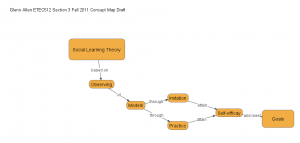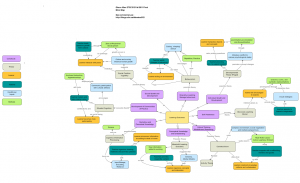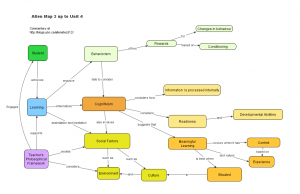I can procrastinate no longer.
Frankly, creating a Mind Map has been my most challenging task so far in the MET program ( 5 courses in). I’ve read the material, reviewed a number of sample mind maps and seem to get what it is about ….. yet I have really struggle with my own.
This first attempt took me a lot longer than I thought. I even asked my wife and daughter for help. After verbalizing the concept I was trying to map, they quickly came up with their own versions, however, neither of them fit well with me. In my mind, the concept map should tell me a story, either to help remember or recall ideas. The problem is that all my efforts to do mind maps result in something extremely linear! This is likely a reflection of how I think.
This is definitely a work in progress!
Below is my first draft of the Map. Following it is a paragraph that outlines my thoughts. I did the text first, then came up with the map.
Interestingly, I had no problem at all learning to use the VUE software. Puzzling how I can be intuitive with the software but unable to use it creatively.

Bandura’s Social Learning Theory suggests that people can learn vicariously by observing others. Teachers model and demonstrate behaviours. Through imitation and practice, learners can attain self-efficacy and meet goals.



